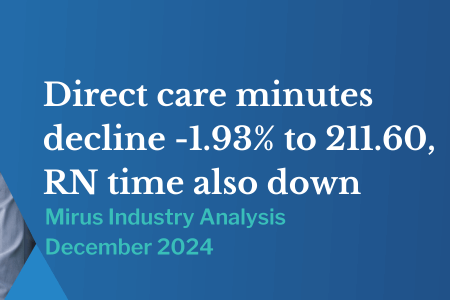What aged care providers are thinking about profitability
June 12, 2024 | Data

By Andrew Farmer, CEO and Partner
Ahead of our next webinar – Strategies for profitability in Aged Care – we captured the thoughts of 233 aged care leaders from 170 organisations across the country providing valuable insights into the current and future financial landscape of aged care businesses. Here’s a closer look at what the survey revealed.
Financial impact of AN-ACC vs. ACFI
One of the key questions explored in the survey was the financial impact of AN-ACC funding structure compared to the previous ACFI. The results show a mixed but cautiously optimistic view:
- 16% of respondents strongly agree that their business is financially better off under AN-ACC.
- 44% agree, indicating a positive shift for a significant portion of the sector.
- 32% are unsure, reflecting ongoing uncertainties and the need for more data and experience with the new system.
These responses suggest that while there is optimism about the new funding structure, there remains a considerable degree of uncertainty and concern that needs to be addressed. It’s evident that the sector is still adjusting to the nuances of AN-ACC, and the full impact of this transition will likely become clearer over time as more organisations adapt and optimise their operations under the new structure.
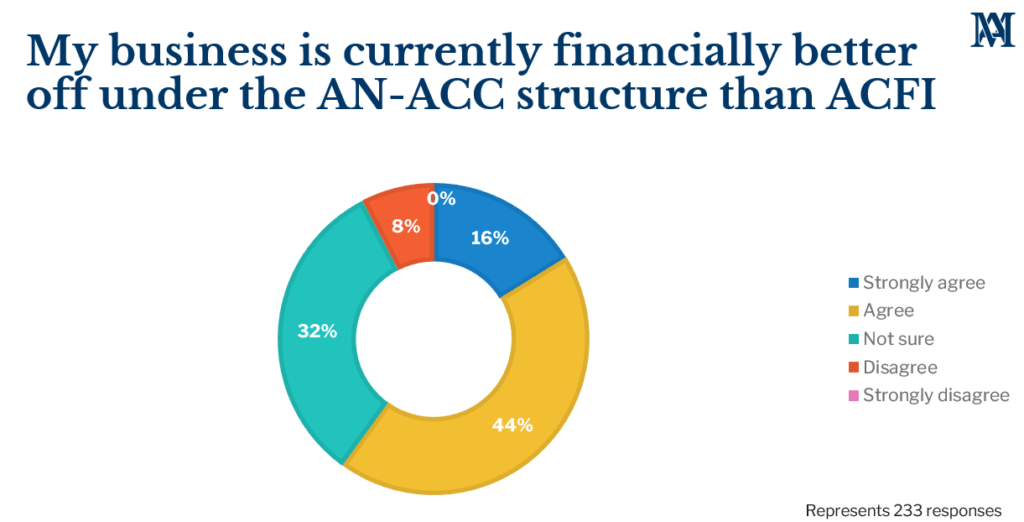
Dependence on non-care income
When asked about the future profitability and viability of their businesses, a significant portion of aged care leaders highlighted the importance of non-care income:
- 7% strongly agree that non-care income will be crucial.
- 44% agree, highlighting the growing emphasis on alternative revenue streams.
- 43% are not sure, indicating that many are still evaluating their options.
- 6% disagree, possibly confident in the sufficiency of care-related funding.
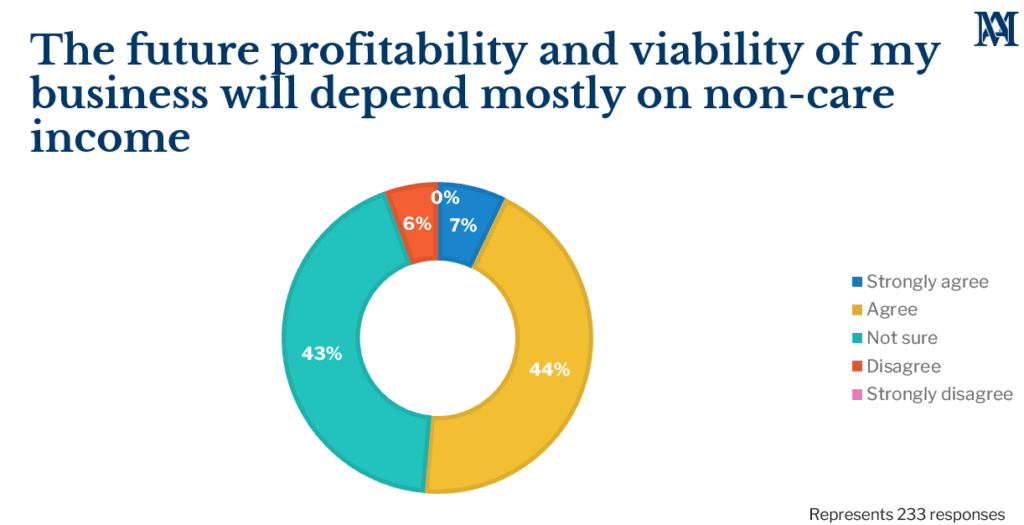
The findings show a clear trend towards the exploration of alternative revenue sources beyond traditional care funding. The reliance on non-care income indicates a strategic pivot where aged care organisations are recognising the need to broaden their financial bases. This could involve leveraging real estate, additional services, and other innovative revenue-generating activities to ensure long-term sustainability.
Strategic reviews and innovations
The survey also reveals a proactive stance among aged care leaders regarding future strategies:
- 27% strongly agree that they will be actively reviewing alternative strategies for profitability or surplus in the next 12 months.
- 56% agree, showing a majority are poised for strategic evaluation and change.
- 16% are not sure, suggesting some hesitance or lack of clear direction.
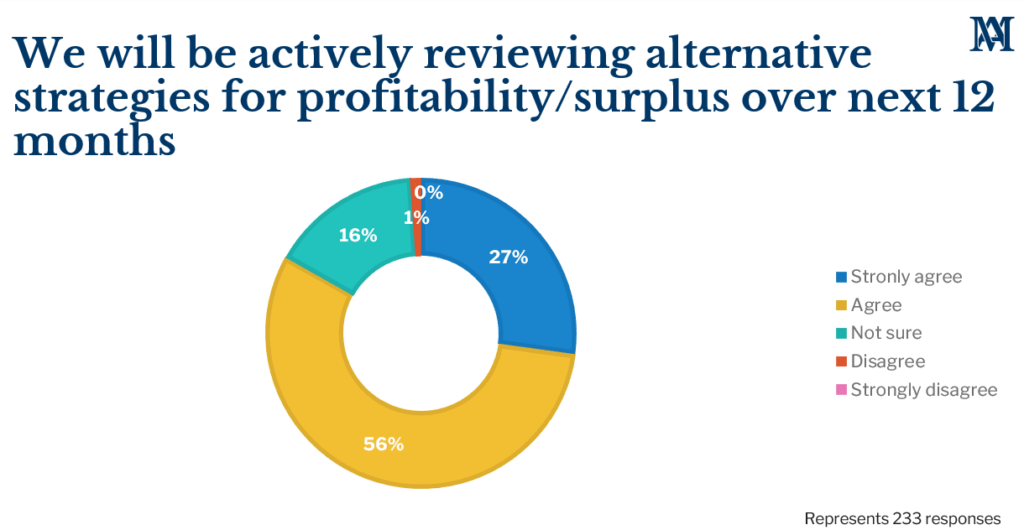
This proactive approach indicated by many respondents is important as the sector seeks sustainable business models. The willingness to explore and implement new strategies reflects a dynamic and forward-thinking attitude within the industry. It indicates that leaders are not only aware of the challenges ahead but are also committed to finding and executing solutions that will keep their organisations viable and thriving.
Key factors for future profitability
Looking at specific factors contributing to future profitability, aged care leaders identified a variety of strategies.
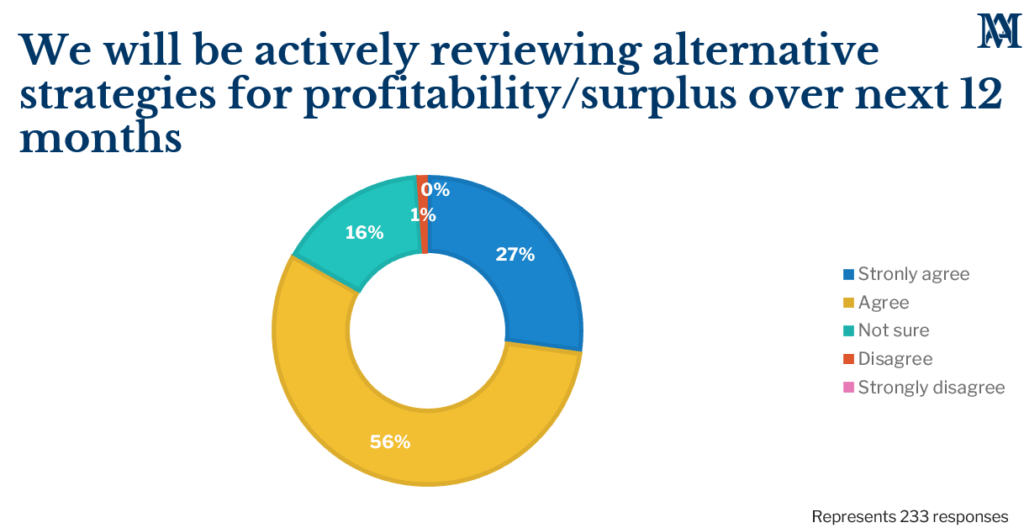
This diverse range of strategies highlights the need for a multifaceted approach to financial sustainability in the aged care sector. The fact that 41% of respondents believe a combination of all these strategies is essential suggests the complexity and interdependence of various revenue streams. A singular approach may no longer be sufficient, and instead, a holistic and integrated strategy will be necessary to navigate the financial landscape effectively.
The shift from ACFI to AN-ACC is a significant transition, and while there is optimism, there remains a considerable percentage (32%) of leaders who are unsure about the financial impact.
The emphasis on non-care income and the proactive review of alternative strategies reflect a broader trend towards innovation and diversification within the aged care sector. Leaders are recognising that traditional funding models are no longer sufficient to ensure long-term viability and are therefore exploring a variety of avenues to enhance profitability.
The proactive strategies and innovative approaches being considered by industry leaders are encouraging signs of an adaptive and forward-thinking industry. As these strategies are implemented and refined, they will play a crucial role in shaping a sustainable and resilient future for aged care in Australia.
If you would like to explore strategies for profitability, contact us today.


